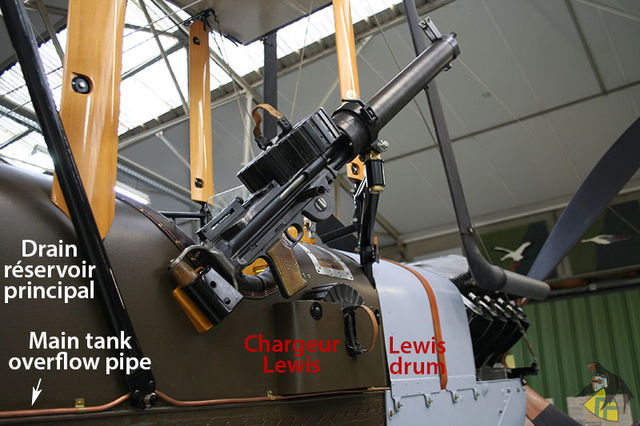

The Be2, designed by the Royal Aircraft Factory (R.A.F.), was in fact an evolution of the early Geoffrey De Havilland and FM Green design, officially based on damaged Blériot and Voisin aeroplanes. It was named Be1, for « Blériot experimental », and was the first aircraft especially designed for a military use.
Powered by a 70 HP Renault engine, the first flight took place in 1912, thus proving its stability in flight, the main quality sought for observation aircraft.
In spite of being a valuable asset for photography and observation, its stability became a definitive handicap versus the first German fighters, such as the Fokker E.III, becoming easy meat and suffering heavy casualties. The Be2s earned inglorious nicknames : « Stability Janes », « The Quirk » or « Bits of Everything »…
Several variants were built, from Be2a to Be2g, each one with some improvements, still without really bringing outstanding performance to this prewar design.
Reconnaissance and bombing were the mains tasks devoted to the Be2s, soon relegated to night bombing and Zeppelin hunting missions.
The Be2f developed in 1916, was in fact an official designation for old Be2c fuselages assembled with Be2e wings and stabilizers, thus slightly improving the performance of the type.
Be2f reproduction

This reproduction was built using original drawings. It is equipped with a new-built 90hp R.A.F. 1a engine reproduction.
It is painted as Be2f #2560 which flew among R.F.C. 52 Squadron. The aircraft was modified as a night bomber. The equipment contains all the night flying apparatus (electric lights, holt flares, etc...), which are fully functional.

52 Squadron Be2f
Building the Be2f
Photoscopes
Photoscope
Memorial Flight's Be2f is finished as a night bomber. It is equipped with functional cockpit lights, navigation lights and wing tip Holt flares. The cockpit is then specially modified as it would have been during the war.
This photoscope shows the Be2f cockpit (rear seat) as well as the observer station (front seat) with working lighting.
Photoscope
Details of the cockpit (rear seat).
Photoscope
Details of the observer station (front seat).
Photoscope
The fuselage before covering.
Photoscope
The cabane before covering.
Photoscope
Horizontal stabilizer and elevator (right side).
Photoscope
Upper left wing before covering.
Night flying equipment
As the aircraft is finished as a night bomber, a fully working electric lighting system, copied from the original one, is installed. Thus, the cockpit is entirely lit up, and the Be2 is equipped with navigation lights. A morse light is fitted under the fuselage and activated with a morse key located inside the cockpit.
This video shows the lighting system of the fuselage in action (cockpit lights, rear navigation light, morse light).
Holt luminous flares are also installed under the wings. They burnt for 1 minute and were used to enlight the grass field and allow the pilot to estimate the height of the aircaft when landing.
Photo Album
Videos
SPAD XIII & Be2f, June 2022 : Dusk flight (8min41s)
R.A.F. Be2f, May 2022 : First flight of the Be2f (4min16s)
R.A.F. Be2f, March 2018 : First R.A.F. 1a engine run at La Ferté-Alais (2min54s)
R.A.F. Be2f, November 2012 : First R.A.F. 1a engine run (2min49s)
Specifications
Length: 8.30 m
Wingspan: 12.42 m
Weight: 649 kg
Engine: 1x 90 hp R.A.F. 1a
Speed: 145 km/h
Endurance: 4h
Crew: 2
Armament: Several bombs + 1 or 2 Lewis machine gun
















































































































